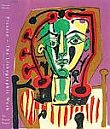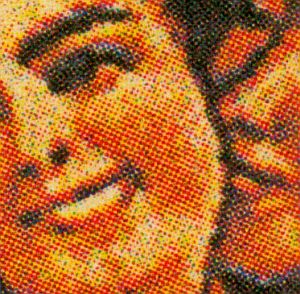A modern first edition’s value is very much dependant on its dust jacket (dust wrapper or dust cover.) A very desirable copy should not only come in its original dust jacket, but the condition of its wrapper should be in relatively mint condition. The dust cover consists of the detachable outer covers usually decorated with attractive illustrations, and folded flaps that hold it together and provide printed author biographical information or a blurb (a publisher outline of some kind.) Rare book collectors look for authenticity and minimal wear, tears, stains, cuts or writing inside or outside the jacket.
Book wrappers have been around since the early 19th century when they were used more like a means to enfold the book completely, like a parcel. Wax was sometimes used to seal the wrapper around the book, forming perfectly matching pointed creases at the edges where the paper folded around the book. Surviving pre-1920 jackets add some additional value to the book they cover and, in some cases, can be worth much more than the book itself. The dust jacket’s use significantly increased after 1920, when publishers used them as decorations with artistic designs and styles. Collectors seeking the most rare finds helped push prices higher with some reaching to astronomical heights. The most famous example is the jacket on the first edition of The Great Gatsby by F. Scott Fitzgerald, published in 1925.
When the same book’s value is 100 times more when covered in its original dust jacket, forgery can become a problem and a concern for the buyer. Here are a few examples of common criminal practices:
1) Original dust jacket replaced with one from a later printing.
2) Use of a facsimile jacket or a restored jacket without a detail explanation.
3) Reprints misrepresented as originals.
How then, does a collector avoid falling victim to one of these practices?
1. Be an educated collector. Let me give you a case in point: If you specialize in first editions from the 1920’s, chances are that you are familiar with the unique indicator of the first issue of the The Great Gatsby’s dust jacket – the “j” in Jay Gatsby on the rear panel was printed in lower case, and carefully hand-corrected in ink to upper-case by the publisher. No uncorrected copies are known to exist. In the second issue of the dust jacket the “J” was corrected. Needless to say, if you come across a copy without the corrected “j” in the back, then you are looking at a reprint of some kind.
2. Paper that looks too new for its age usually is too new for its age. Look for signs of non-uniformity in color for authenticity, especially at the edges. Look for signs of wear at the creases that are part of the paper material and not one achieved through reproduction. Look at any of the white spaces of the dust jacket for age toning or soiling. Ultra violet rays are harmful to paper, and they quickly cause discoloration or sunning that may be older than a few years of age.
A serious collector relies on magnification to examine the printing closely. Older original dust jackets were printed by lithographic printing, which presses ink directly to the paper and produces fuzzy, uniform patterns, especially at the edges. Under a magnifier some will look more like lines and dashes, and have coarser dots. A facsimile copy, on the other hand, will display more well-defined color separation, and the dots which are much smaller appear random. The best ink jet printers can produce images having over eight million dots within a square inch.
< Lithographic offset presses ink directly to the paper and produces fuzzy, uniform patterns, especially at the edges.
Facsimile reproductions> with smaller random dots and more rigid color separation.
As the printing industry continues to adopt more advanced digital technology, the differentiation between the old chromolithography and forms of digital reproductions are probably going to converge further. An indigo print for example, looks slightly different from offset lithography, with dots that are large and fuzzy, and thus more like offset lithography than inkjet printing. At the same time dust jackets from later printings “married” to first edition, first printing books may go unnoticed for in cases of less important collectibles. If no one is able to tell the difference, should any one even care?



{ 11 comments… read them below or add one }
Would a rare dust jacket that had been “scotch magic” taped on the inside be worthless?
I have a copy of The Man in the Iron Mask by Alexandre Dumas, Grosset & Dunlap.
The dust jacket has Alexandre spelled incorrectly. It is spelled Alexander. Does this affect the value?
Thank you
i have a rare book and at times wonder if it would be possible to find an original dust jacket for it. is there a company that specializes in selling dustjackets without the book itself.?
thx
Good Day,
I recently bought a copy of James Graham’s (aka Harry Patterson; Aka…etc.) A Game For Heroes. The the information on the publisher’s page seems to indicate a first edition.
The dust jacket is not price-clipped, but there is no price printed.
The book was published in 1970, and therefore I have to believe would have a price on the DJ.
Does the lack of a printed price on the DJ mean that I have a “non-trade”/ BCE copy?
No printed indication of BCE.
A couple of things to check 1. An impression on bottom, right of rear panel indicating it is a bookclub/BOM. 2. Look for a number at bottom rear of the dust-jacket. This is not printed on club DJs but is printed on at least the 1st and 2nd issue DJ. Hope this helps.
I’m selling books as a hobby. Just a couple a month (if I’m lucky). My problem with this idea that jackets should not be repaired is I hate to ship books that look bad. I wouldn’t want to receive one that has a ripped, messy jacket, and I assume others feel the same. So, when a book has a bad jacket, I get out my glue pot and archival tissue, and repair the tear before it can get worse.
Question: Would you leave an erasable mark on a jacket? Just like rips, jackets with stains and marks are damaged from careless handling. Why is erasing or cleaning to fix the appearance any different than fixing rips or other jacket damage? I do tell the potential buyer that it’s repaired and in most cases one can see where my repairs are made.
Right now I’m fixing 2 Andrew Wyeth books. Why Houghton Mifflin should bind a beautiful, large, heavy book in an unvarnished, weak, junk paper, I don’t know. I have 3 copies of the book (I’m keeping one) and all have the same damaged covers. The books are in very good condition. To me they look naked with all the ragged rips and tears.
Most other collectibles improve their value with good quality restoration (except furniture). Anyone who watches Antiques Roadshow knows that the appraiser gives a higher value to an item that has been restored than one that looks like junk. I don’t know why books are different.
Anyway, I’ve said my piece. I will continue to repair dust jackets. I don’t have books like F. Scott Fitzgerald’s to sell anyway, so I don’t have to worry.
Hi, I too repair dustwrappers, to a point as a tatty ripped wrapper looks awful. I collect and sell childrens books which occur with or without wrappers, children being children destroy books generally. I prefer to describe my books as having been renovated to prevent further deterioration as restored is a grey area implying return to original. I repair using mulberry tissue to the reverse with cellulose adhesive compatible with the paper so minor paper loss and repair in general is very obvious. The aesthetics of the jackets are vastly improved and are fully described when sold. This process does increase the books value , and why not? Something in my opinion is only worth what one is prepared to pay for it.
You should probably switch your two examples. The one on the right looks more like a halftone produced by offset and the one on the left looks like the random dots of an inkjet. However, it’s true that a serious collector should do his/her homework before buying any first edition with a dust jacket. Only buy from reputable and trustworthy dealers! Facsimile dust jackets are perfect for dressing up your library, and the quality of them varies a great deal, but anyone who produces worthwhile facsimiles always marks them in some way so they won’t be mistaken as originals. The jackets I produce are intended to present the color artwork and typography of the originals along with the publisher’s ads for other books of the same period. They don’t add value to the book necessarily, but they do add enjoyment.
Best wishes.
We need to practice using our magnifying glass to confirm!!
Fancy decribing yourself as a bookworm and describing a dustwrapper (or book) as MINT! (in an otherwise excellent post, I hasten to add.)
Books are PRINTED which is why the book trade describes the finest as FINE, never Mint (coins are minted!)
We stand corrected.
Worm regards.
{ 2 trackbacks }